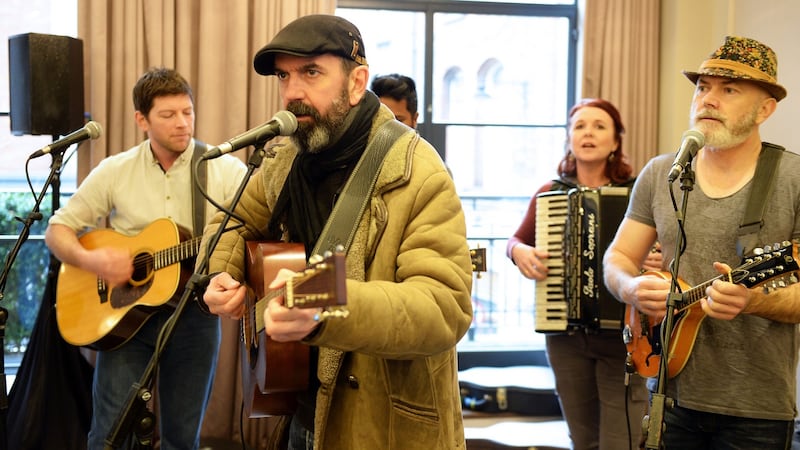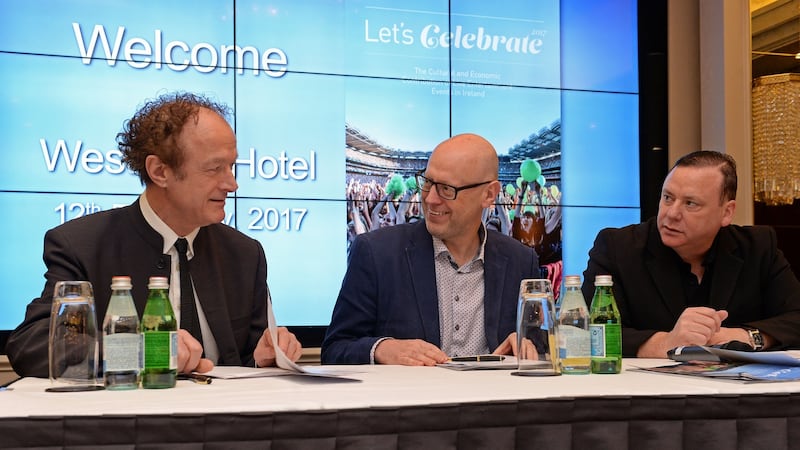How much is the live entertainment industry in Ireland actually worth to the country? How many people go to concerts, plays, comedy and other forms of performance? A report, Let's Celebrate: the Cultural and Economic Contribution of Live Entertainment Events in Ireland, launched with some fanfare in Dublin on Sunday afternoon, aims to answer those questions for the first time.
Given the subject, a bit of razzmatazz is to be expected, although the glossy report in parts reads like a promotional brochure. Celebrity testimonials litter its pages. "When the recession hit Ireland I changed all the big screens in Lord of the Dance to show off the landscape and promote the country," writes Michael Flatley. "As an artist I felt it was important to do that."
Others are more measured, with some of the biggest names in Irish arts and entertainment rallying to the cause.


Under-explored subject
Although it is described as a “farm to fork” study, there’s not much information about the provenance of the work which people pay to go and see, what types of production are most popular or on how domestic acts measure up against international touring performances.
But the study, conceived, written and co-ordinated by veteran music promoter Justin Green with research from London-based research company BOP Consulting, offers interesting nuggets on a previously under-explored subject. Although the data is based solely on Ticketmaster records, that company is such a huge presence in the Irish market (accounting for close to half of all sales) that it can be taken as representative of overall trends with some confidence.
Covering the 12 months from March 2015 to February 2016, the report shows over four million people attended live events – including nearly 300,000 overseas visitors to the island of Ireland. In all, it says, these events were responsible for 3.7 million bednights in hotels and guesthouses (which seems surprisingly high), generating €1.7 billion of revenue and supporting employment for nearly 11,500 people. And it claims that, for every euro spent, an additional €6.06 is generated in the economy.
Dublin’s dominant position
The regional breakdown between Dublin and the rest of Ireland may also be surprising. Events in Dublin achieved three million attendees, with 629,000 in Northern Ireland and only 400,000 in the rest of the Republic outside Dublin. This seven-to-one disparity may reflect Ticketmaster's vice-like hold on major venues in the capital as much as it does the city's dominant position on the nation's cultural landscape.
These are intriguing times for live events. The digital revolution has upended the traditional business models of the music industry, so that live performances rather than recordings now form the main source of revenue for performers. A broader trend of younger consumers preferring to spend their disposable income on “experiences” instead of “stuff” indicates that real opportunities exist for growth.
The report surveyed 5,764 Ticketmaster attendees about their experience and received overwhelmingly positive responses. But questions remain about value for money, handling fees and the thorny issue of ticket touting. However, the Let’s Celebrate report will form a useful base camp for the mainstream live entertainment industry as it argues its case for sympathetic treatment in discussions on the Government’s much vaunted but as yet unrealised Creative Ireland strategy.










